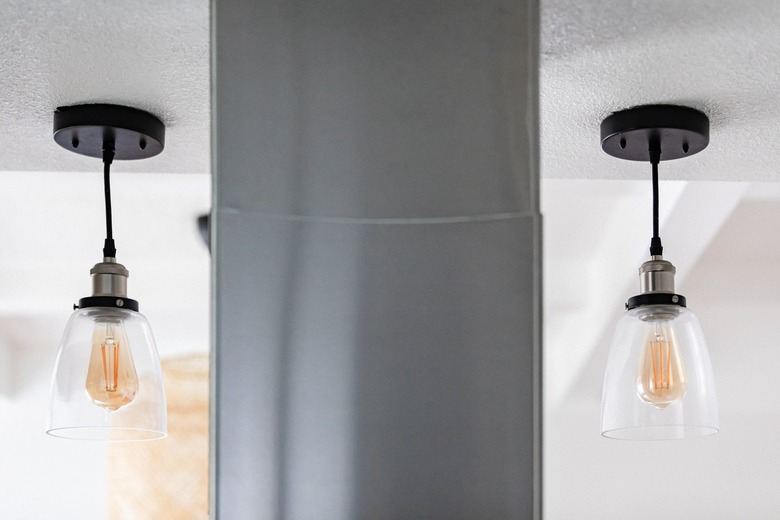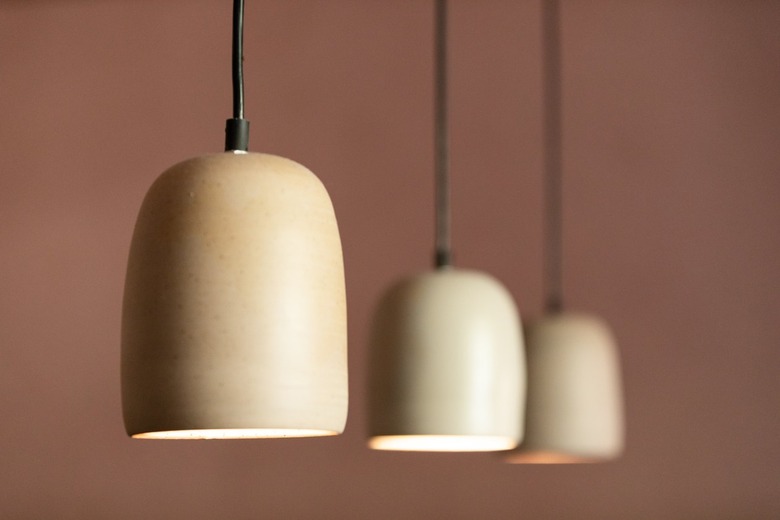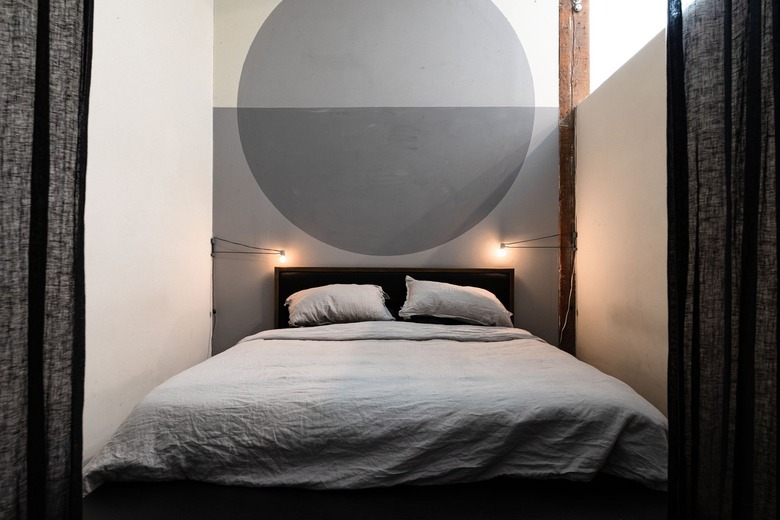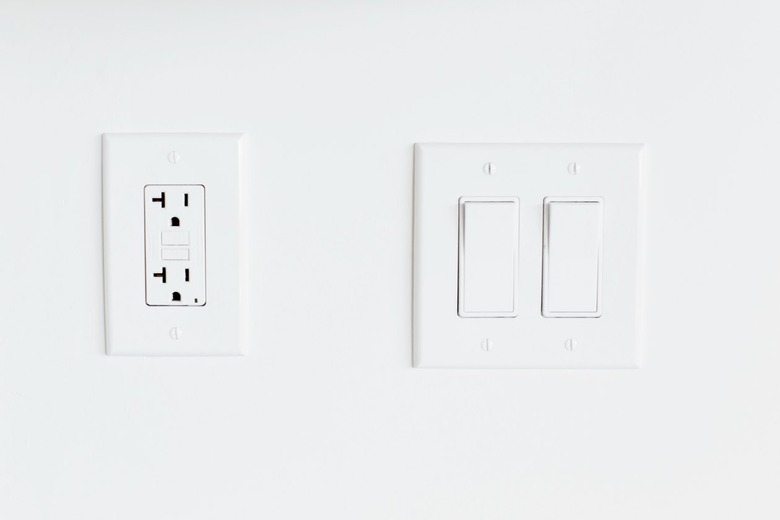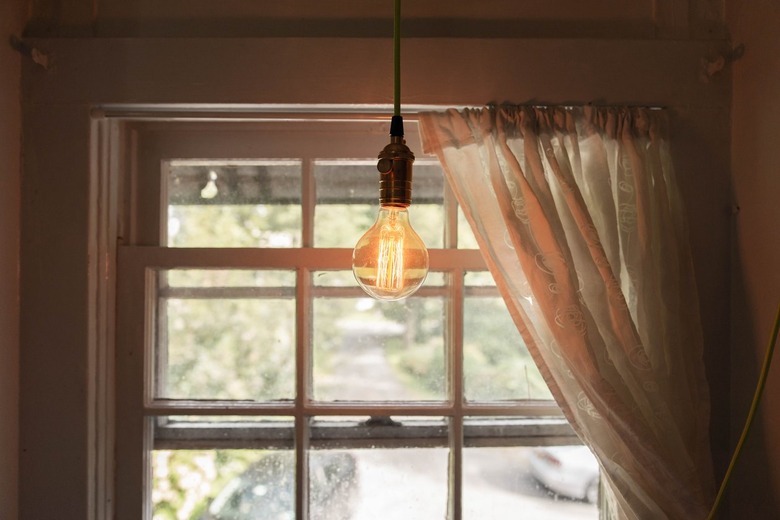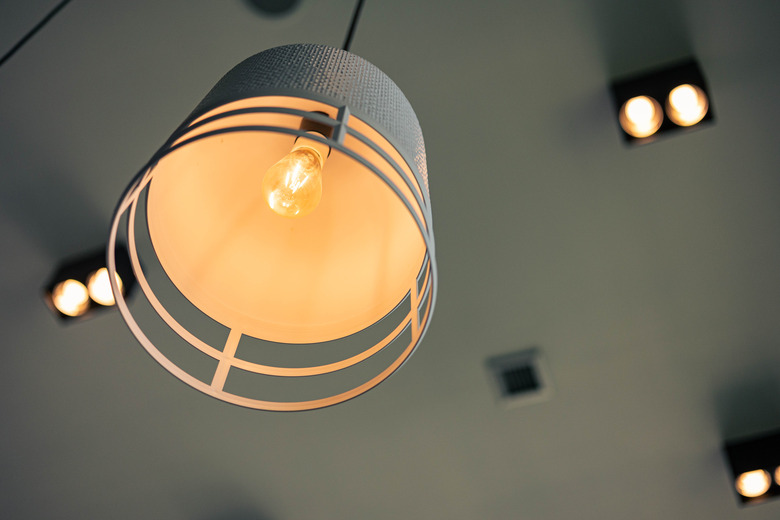Light Source, Lumens, LED, And Other Lighting Terms You Need To Know
We may receive a commission on purchases made from links.
You might think of your lamp as the fixture you keep on your desk to help you see what you're reading, but in the lighting world, it's considered a manufactured light source — not just a lamp. By this definition, the bulbs in a chandelier are lamps, as are floodlights, flashlight bulbs, and fairy lights. Any manufactured light source is technically a lamp.
There are lighting terms for light output, light quality, power consumption, and more. There are also important terms that relate specifically to bulbs (i.e. lamps). While you don't need to know all of these terms to purchase lighting for your house, garden, or office, it's good to be familiar with some basic ones. Knowing these terms will help you find the right light for your needs.
Light Source Brightness
Light Source Brightness
Brightness depends on the intensity of a light source as well as how much the light is focused. There are three units to measure it:
- Lumen
- Calendela
- Lux
Lumen
The total amount of light a source (also known as a luminaire) radiates in all directions is known as luminous flux, and it's measured in lumens. The higher the number of lumens, the higher the luminous flux and the brighter the luminaire. People used to measure light output in watts, but that was when incandescent bulbs were the only type available. Lumens is a more accurate unit, and many manufacturers list the light efficacy of a lamp in lumens per watt.
Candela
Previously known as candlepower, the candela is a measure of luminous intensity in a particular direction. Whereas the number of lumens a light source emits is fixed for that source, the number of candela varies with focus and distance from the source. Being a highly focused beam of light, a laser has the highest candela rating of any light source.
Lux
Lux is a measure of illuminance, or the amount of light that falls on a surface per unit area. The actual definition of a lux is one lumen per square meter. An alternative unit is the footcandle, which is one lumen per square foot. For any given surface, the number of lux that falls on it is dependent on its distance from the source, so if you see the output on a lamp listed in lux, the distance should also be specified.
Light Color and Quality
Light Color and Quality
Even if they are emitting the same number of lumens, there's a big difference in the quality of light from a fluorescent fixture versus an incandescent lamp. There are two units that measure this:
- Color Temperature
- Color Rendering Index (CRI)
Color Temperature
The hotter a light source, the shorter the wavelength of visible light it emits and the more the color shifts toward the ultraviolet end of the spectrum and away from the infrared end. Color temperature is measured in degrees Kelvin (K) and is typically between 2,000K (warm) and 6,500K (cool). Warm light — from 2,000K to 3,500K — is generally more relaxing, while cool light — above 4,000K— is more revealing.
Color Rendering Index (CRI)
CRI is a measure of how faithfully a light source reveals the actual colors of the objects it illuminates. CRI is measured on a scale from 1 to 100 with higher values indicating more authentic color rendering and lower ones tending to make objects appear washed out. Lamps should generally have a CRI above 85, and one with a CRI above 90 is considered good for color vibrancy. Dimming lights is one way to adjust CRI.
Electrical Power Consumption
Electrical Power Consumption
Lamps consume electricity to produce light, and you need to know two terms to discuss this quantitatively:
- Watt
- Voltage
Watt
The watt is a measure of electrical usage, and it's related to the amount of electrical current a lamp draws (measured in amperes). For a particular type of lamp, the higher the wattage it consumes, the more light it produces, but different lamps have different light efficacies. The best-known comparison is between a light emitting diode (LED) bulb and an incandescent one. An incandescent bulb consumes many more watts of electricity than an LED to produce the same amount of light.
Voltage
Some lamps operate at line voltage, while others (mostly cabinet, track, and landscape lights) operate at low voltage. Line voltage is the voltage of the electrical system itself (typically 120 volts), while low voltage is anything below 50 volts. Most low-voltage lamps operate at 12 volts and need a step-down transformer to convert the line voltage to their operating voltage.
Types of Light Bulbs
Types of Light Bulbs
Four types of light bulbs have been developed, and all are available at any lighting outlet. The four types of light bulbs you should know are:
- Incandescent
- Halogen
- Fluorescent and Compact Fluorescent (CFL)
- Light Emitting Diode (LED)
Incandescent
An incandescent bulb consists of a sealed, gas-filled glass chamber that surrounds a tungsten filament. When electricity passes through the filament, electrical resistance causes it to glow and emit light. This is the original light bulb. It generally provides warm light and has the lowest light efficacy of any lamp.
Halogen
A halogen bulb is a type of incandescent bulb, but the sealed chamber is filled with halogen gas that allows the filament to burn hotter and get brighter than a regular incandescent. Halogen lamps emit cooler light while consuming about the same amount of power as regular incandescents.
Fluorescent and Compact Fluorescent (CFL)
Fluorescent lamps are glass tubes that contain an inert gas, such as neon or argon, which ionizes at high voltages supplied by a ballast. A ballast is an electronic component that magnifies voltage. The ionization of the gas emits ultraviolet radiation, which strikes the phosphor-coated surface of the bulb enclosure and makes it glow. Fluorescent lighting typically has a color temperature that is cool and revealing.
CFLs operate in the same way as fluorescent bulbs, but their tubes are bent into the shape of a standard incandescent bulb or other compact forms, and the ballast is in the base of the bulb rather than on the light fixture. CFLs have a higher light efficacy than incandescents, but they contain mercury, which poses a problem for disposal.
Light Emitting Diode (LED)
An LED is an electronic device that has the highest light efficacy and longest lamp life of any type of light source. LED lights don't have to be in a sealed chamber to operate, but in practice, several LEDs are enclosed in a plastic, bulblike container — or globe — which is fitted with a conventional bulb base that allows you to interchange one with another type of bulb. An LED drawing 7 watts can produce the same number of lumens as a 12-watt CFL or a 40-watt incandescent.
Light Bulb Characteristics
Light Bulb Characteristics
Thomas Edison usually gets credit for inventing the light bulb, but his real achievement was to perfect a design that had already been around for at least 40 years. The design of Edison's bulb remained virtually unchanged for most of the 20th century — until CFLs and LEDs began to rise in popularity, and even they retain some of the same features. However, there's a lot more diversity than you might expect with light bulbs.
The Globe
The globe is the part of the bulb that contains the light source. Some are transparent, but many are translucent to deliver more diffuse light. CFLs don't have globes per se but rather tubes wound into a globelike shape, and like straight fluorescent tubes, they are coated with phosphors that glow when struck by the ultraviolet light released by the ionized gas inside the tubes. Similarly, the globes of reflector bulbs are coated with a reflective material to increase light intensity.
Globes can assume a variety of shapes, from the familiar oval shape of the standard light bulb to tear drops, spheres, and cylinders. Shapes are designated by a series of letters and numbers, with some of the most common being:
- The A group: This is the standard light bulb shape.
- The G group: Often called globe lights, these bulbs are spherical.
- The C group: These bulbs have a conical shape.
- The BR group: BR stands for bulged reflector. It's the most common shape for spotlights.
- The MR group: MR stands for multifaceted reflector. These are small bulbs with pin bases common in a low-voltage lighting system.
- The T group: These tubular bulbs fit in fluorescent light fixtures.
The Filament
Filaments are found only in incandescent lamps; neither CFL nor LED bulbs have them. The filament is attached to thin wires that are in turn connected to the power source, and the resistive glow it produces when electricity flows through it produces light. When an incandescent bulb "burns out," it's because the filament burns up or breaks.
The Base
The base is one of the most important things to consider when choosing a light bulb. There are more than 50 different types, including 11 different sizes of Edison screw bases, which are pretty much identical to the ones that Edison introduced on his bulbs. The four Edison screw bases you're likely to find at a lighting outlet include:
- E39 (mogul): The largest screw base (the number after the E indicates the diameter of the base in millimeters).
- E26 (medium): The most common base found in ordinary household light fixtures.
- E17 (appliance): This base fits appliance sockets and smaller light fixtures.
- E12 (candelabra): This base fits chandeliers and ceiling fans.
Other types of bases include:
- Twist & lock: More common in specialty lighting than in household lighting fixtures.
- Bi-pin bases: Common on 12V light fixtures, bulbs with bi-pin bases have pins that act as electrodes.
- Fluorescent pin bases: Used for fluorescent tubes and fixtures.
- Compact fluorescent plug-in bases: Used for some types of compact fluorescent lamps.
The Edison base is by far the most common, and it's sometimes referred to as a single contact base because the bulb doesn't become energized until it is fully screwed in and the button on the bottom makes contact with the base of the socket.
